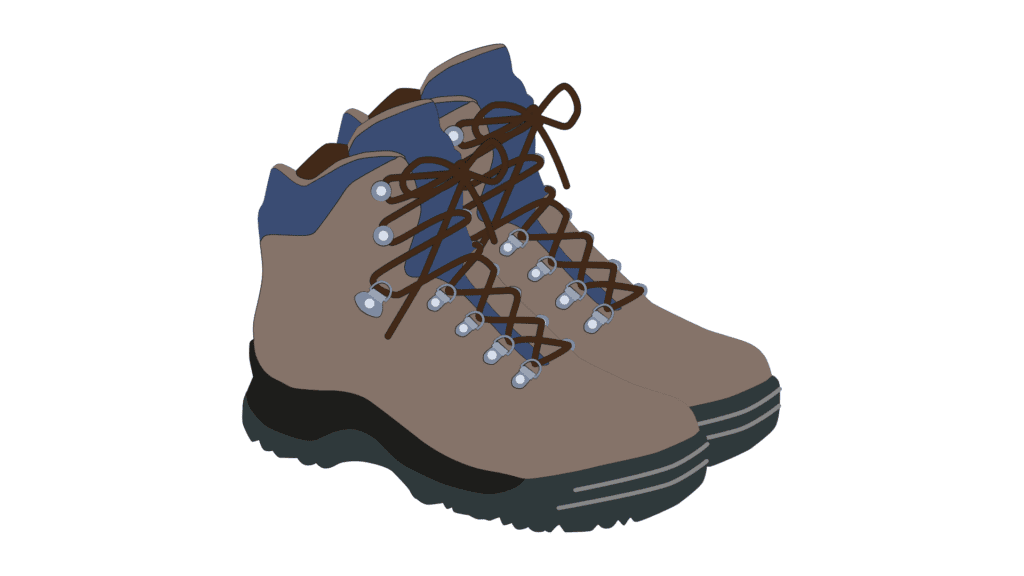8 Tips for Selecting the Right Work Boots for Safety

If you’re reading this, you probably spend a lot of time on your feet at work.
You probably also know that good work boots aren’t cheap, but you’ve been putting off replacing yours because “they’re still fine” (narrator: they were not fine).
Why am I bringing this up? Because your feet are literally carrying you through life, and they deserve better than those worn-out disasters you call boots.
The average person takes 10,000 steps a day (in terrible footwear)
For someone working a physical job, that number can easily double. And each step with bad boots is like a tiny little punishment for your feet, ankles, knees, and back.
The wrong work boots can cause:
- Plantar fasciitis (that stabbing pain in your heel)
- Stress fractures
- Bunions and calluses
- Knee pain that mysteriously appears in your 30s
- Back problems that follow you into retirement
These aren’t just minor inconveniences – they’re career-limiting issues that can eventually force you out of the job you depend on.
1. Know your workplace (before it knows you)
The first rule of boot club? Understand exactly what you’re up against at work.
Your environment determines everything:
- Working with heavy objects? You need serious toe protection.
- Slippery surfaces? Traction is non-negotiable.
- Electrical work? Those steel toes might literally kill you.
- Outdoor construction? Waterproofing matters more than you think.
Don’t be the person who buys hiking boots for a construction site. That’s like bringing a water gun to a forest fire.
2. The toe protection debate isn’t actually a debate
There are three main types of protective toes, and they’re not created equal:
- Steel toe: Maximum protection, slightly heavier, conducts temperature (cold in winter, hot in summer)
- Composite toe: Lighter weight, non-metallic (great for airport workers), doesn’t conduct cold/heat
- Aluminum toe: Middle ground between steel and composite, lighter than steel but still metal
Steel is still king for serious protection, but if you’re on your feet all day or walking through metal detectors, composite might be your new best friend.
3. Comfort isn’t just a luxury (it’s a safety feature)
Uncomfortable boots lead to:
- Distraction (when you should be focusing on not getting hurt)
- Fatigue (making accidents more likely)
- Compensation in your walking pattern (hello, knee and back problems)
A proper fit means:
- About a half-inch of space for your toes
- No slipping at the heel
- Snug around the middle of your foot
- Room for work socks (which are thicker than regular socks)
Pro tip: Shop for boots at the end of the day when your feet are slightly swollen – just like they’ll be at work.
4. Gravity + slippery surfaces = a bad time
Slip resistance isn’t optional unless falling on your ass at work sounds fun.
Look for:
- Deep tread patterns (more grip)
- Rubber outsoles (better traction)
- Boots certified for your specific environment (oil-resistant, chemical-resistant)
That diamond or lug pattern on the bottom isn’t just for looks – it’s keeping you vertical when things get slick.
5. Electricity doesn’t care how tough you are
If you work around electrical hazards, your boots need to be non-conductive. Full stop.
Electrical hazard (EH) rated boots can be the difference between a normal day and a really, really bad day.
The fancy term to look for is “ASTM F2413-18 EH” – it’s basically boot-speak for “won’t help electricity fry you.”
6. Mother Nature is not your friend
Working outdoors means dealing with whatever weather decides to show up.
Waterproof boots aren’t just about comfort:
- Wet feet get cold fast (hello, frostbite)
- Moisture leads to blisters (goodbye, productivity)
- Wet leather deteriorates quickly (RIP, expensive boots)
And if you’re working in cold environments, insulation isn’t just nice to have – it’s essential for preventing cold-related injuries.
7. Cheap boots are expensive in the long run
I get it – dropping $200+ on work boots feels painful. But here’s some math:
- Cheap $70 boots that last 6 months = $140/year
- Quality $200 boots that last 2+ years = $100/year
Better boots are actually cheaper, not to mention the medical bills you’re avoiding by protecting your feet properly.
Look for full-grain leather, reinforced stitching, and Goodyear welt construction if you want boots that outlast your car.
8. Height matters (in boots, at least)
Boot height isn’t about style – it’s about protection:
- 6-inch boots: More flexibility, easier to walk in
- 8-inch boots: Better ankle support, more protection
- 10+ inch boots: Maximum protection from debris and elements
The right height depends on your job. Climbing ladders all day? Lower might be better. Trudging through construction sites with debris? Go higher.
The bottom line: Your feet deserve better
Your work boots are literally the foundation of your workday. They impact your safety, comfort, productivity, and long-term health.
Investing in the right pair isn’t splurging – it’s protecting your most valuable tools (your feet) and by extension, your livelihood.
So take a good, hard look at those worn-out things on your feet. If they’re not offering the protection and support you need, it’s time for an upgrade.
Your future self (with fewer aches, pains, and injuries) will thank you.
